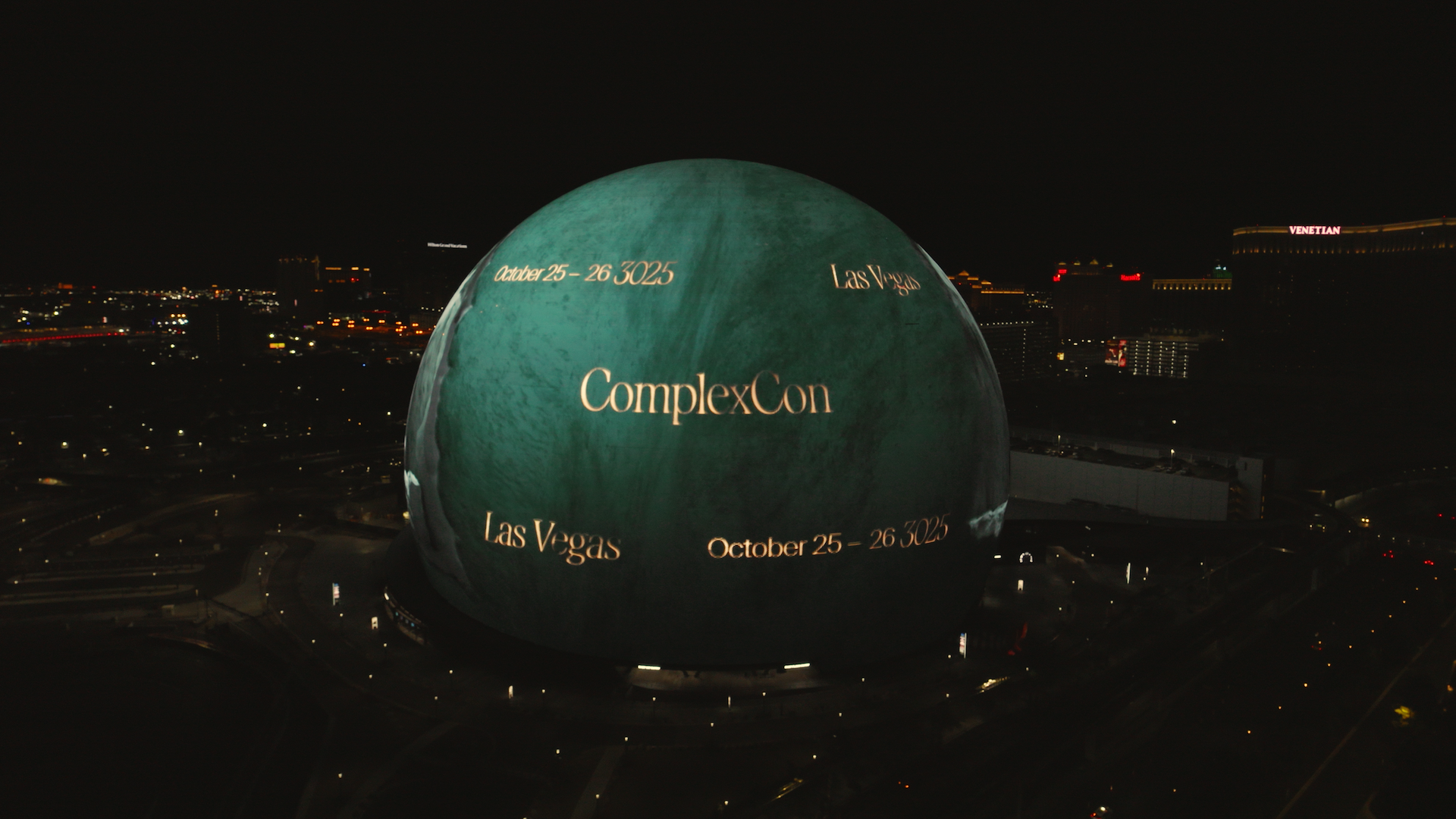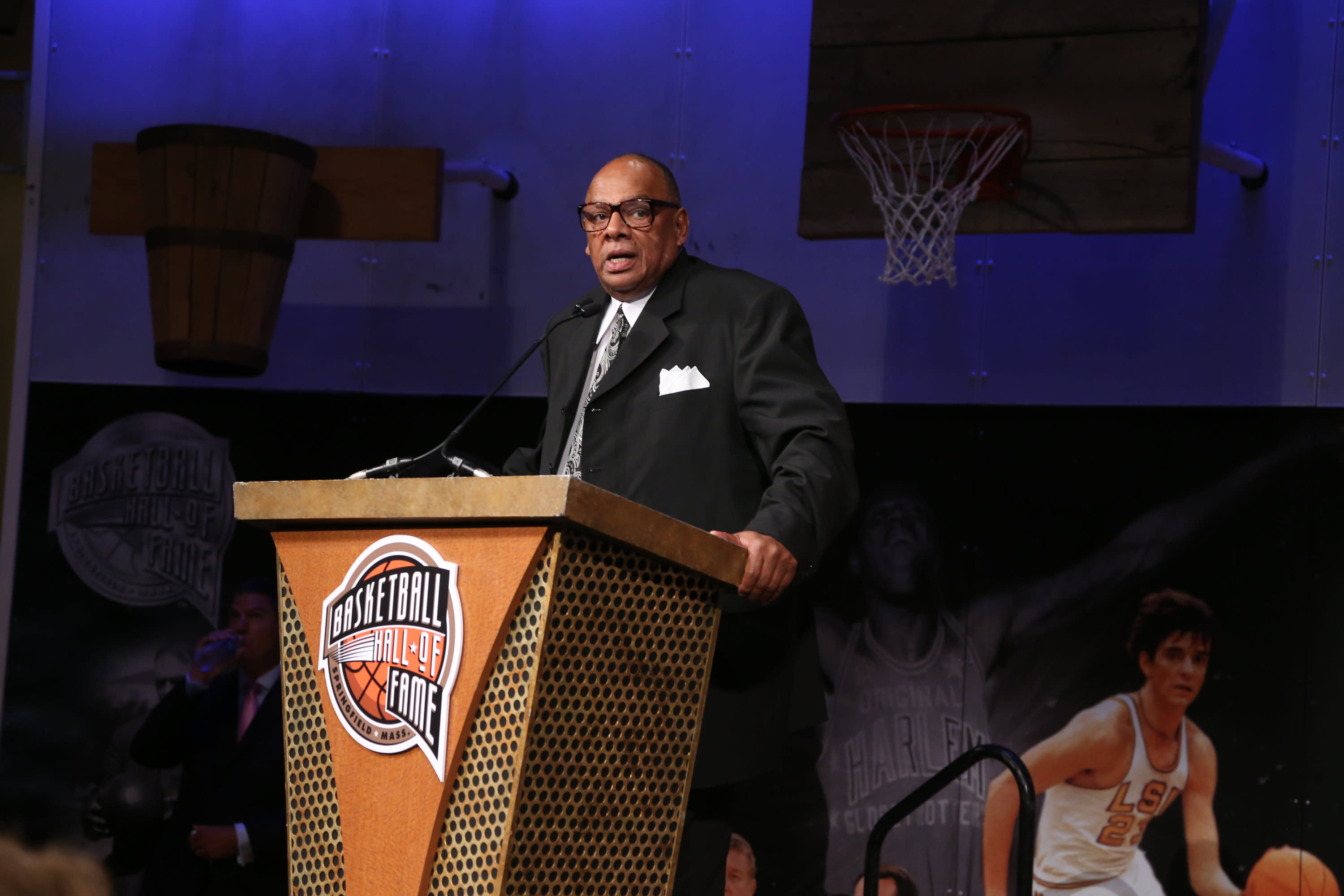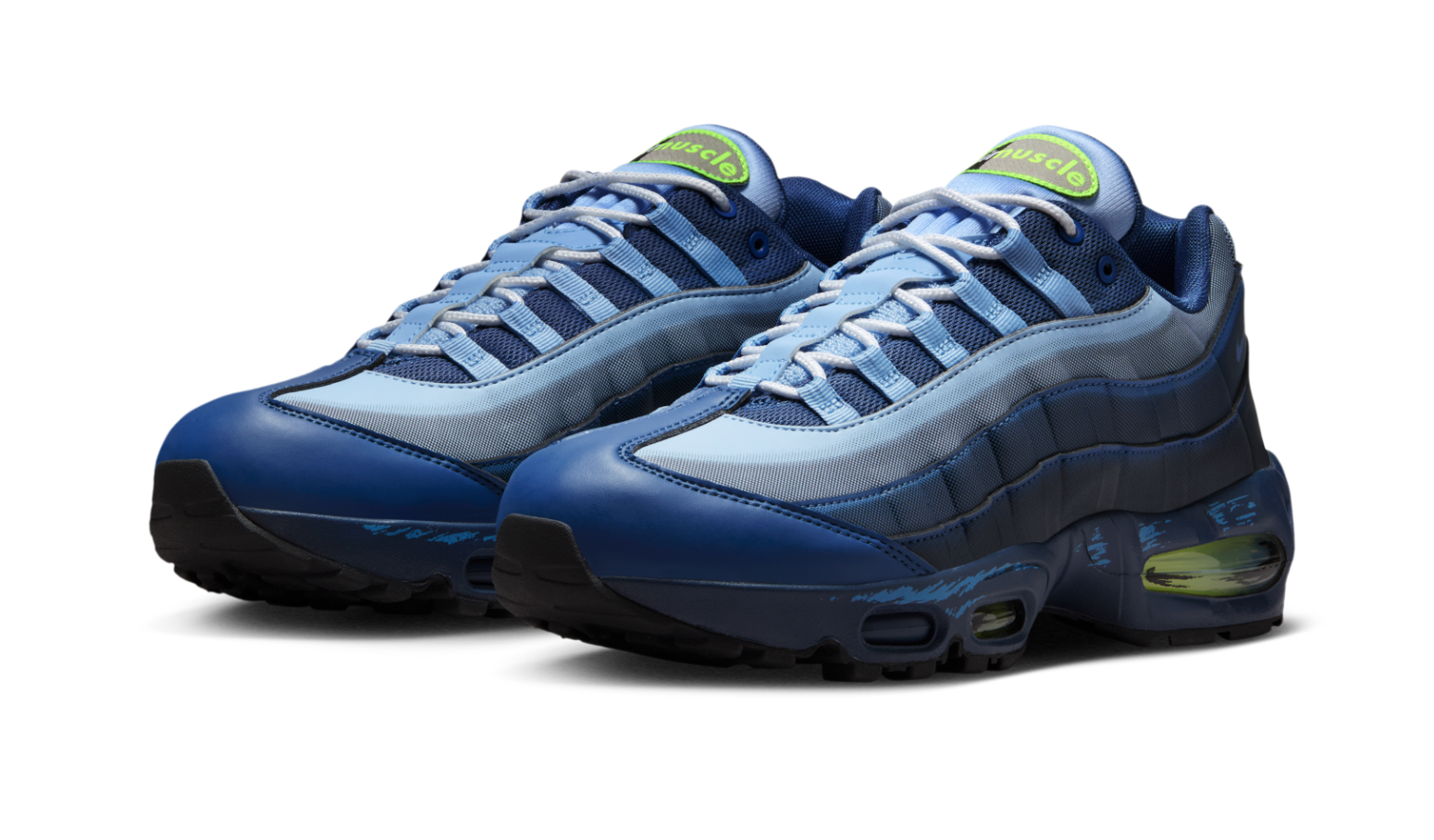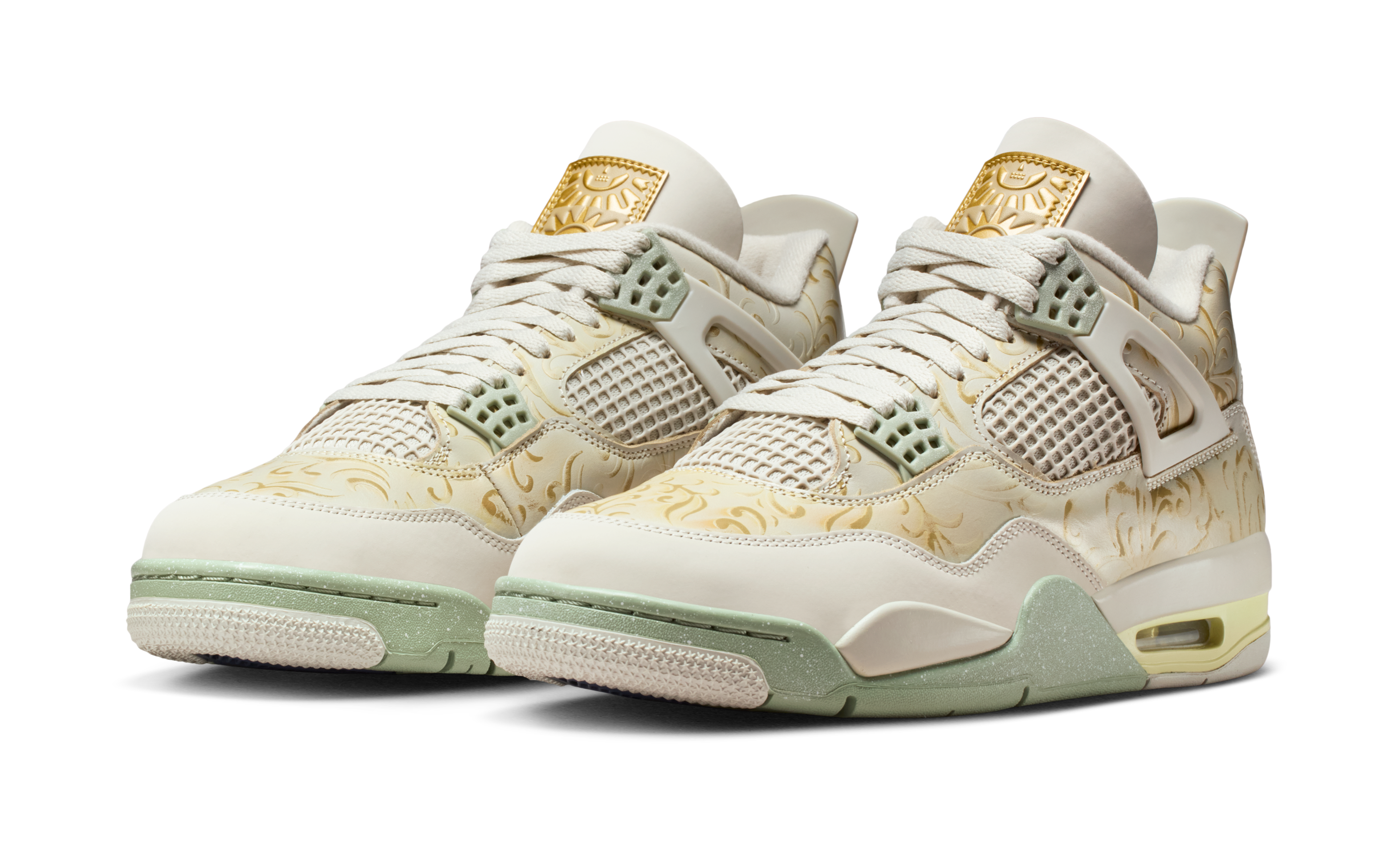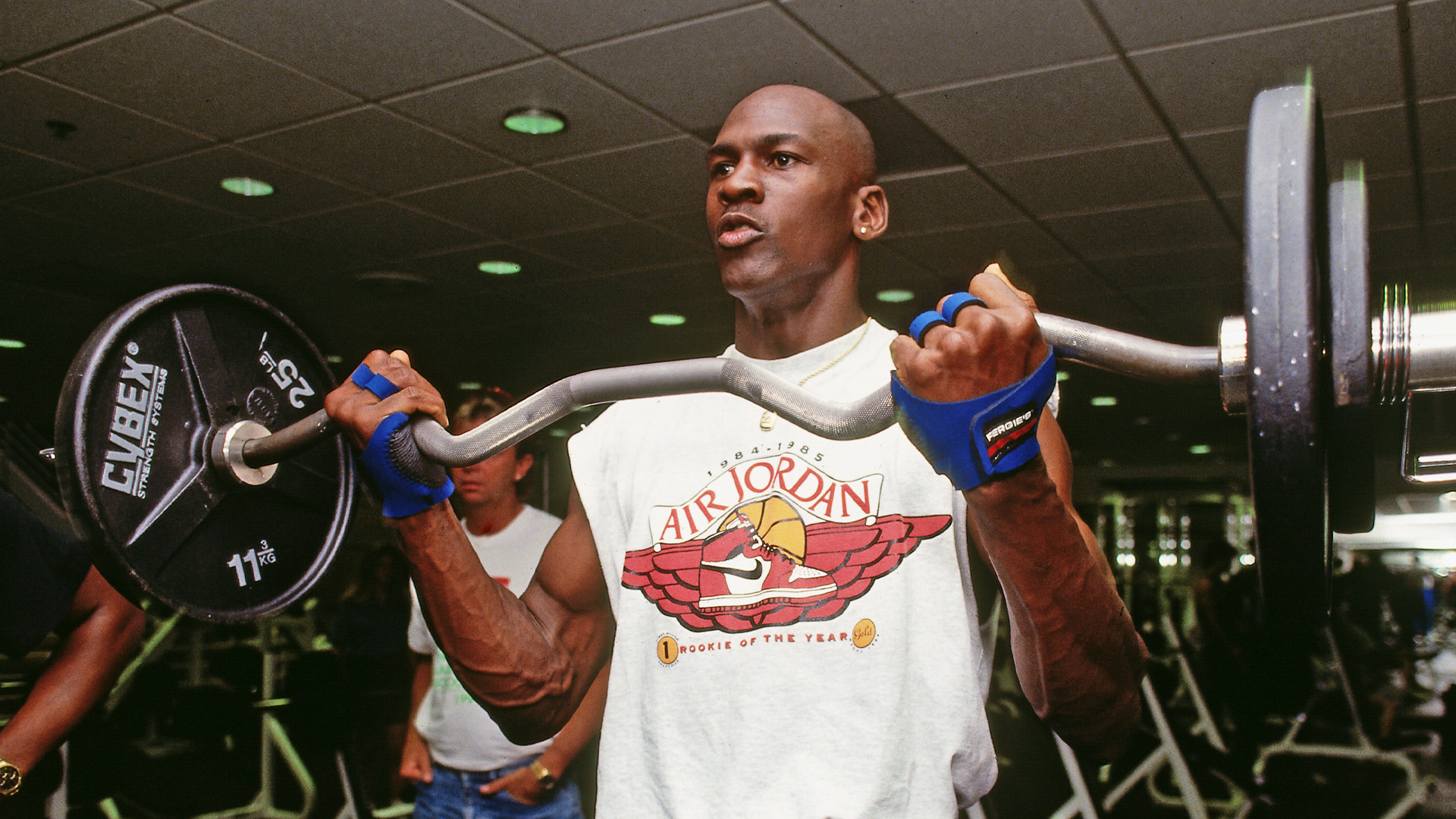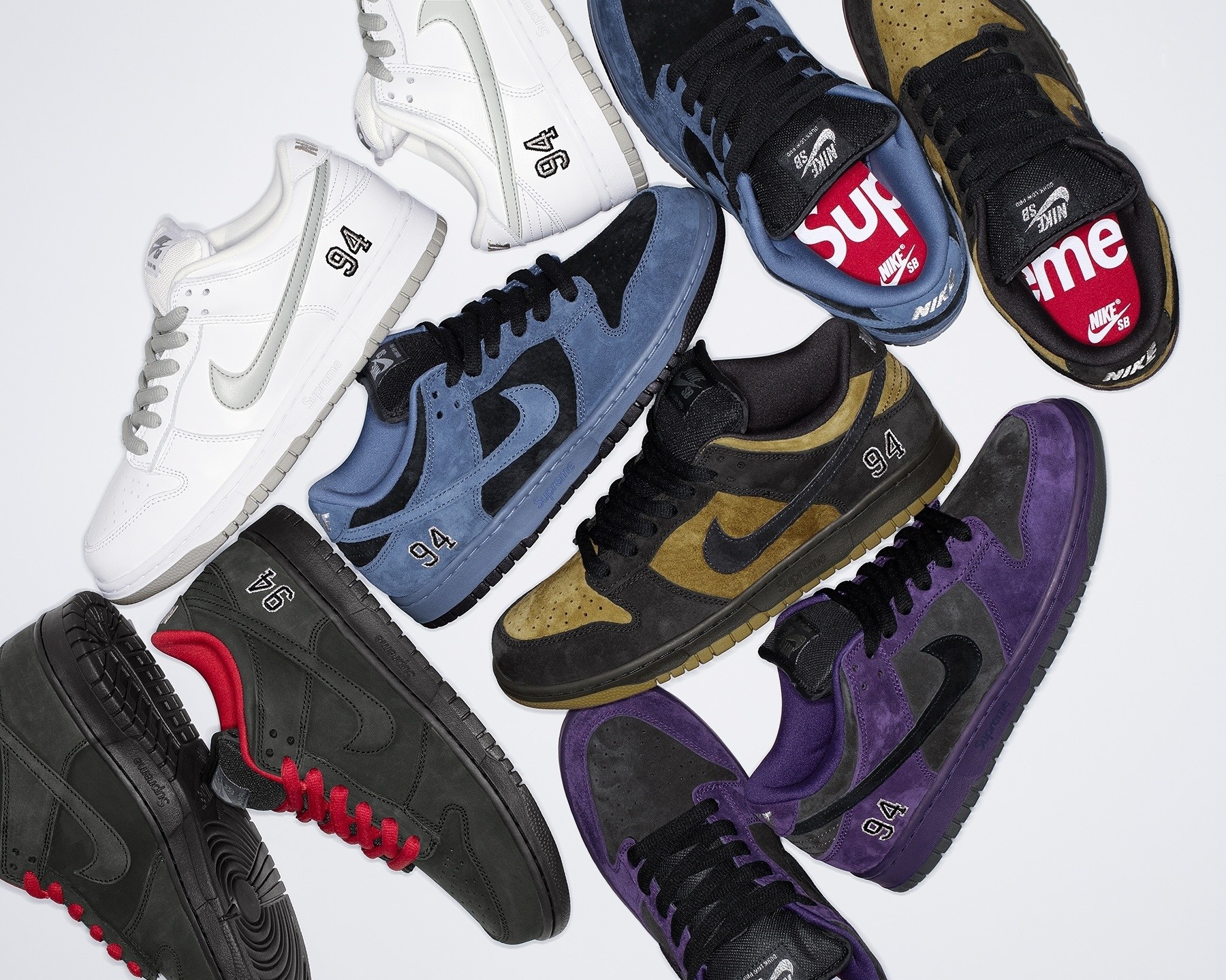2025 by many measures is a banner year for sneaker releases, even crowned by some as the best ever only eight months in. Relic retros have been unarchived, independents are restoring the feeling, and an investment by brands on storytelling is creating both community and chase.
So why has the conversation shifted to Team Jordans?
In recent weeks, viral topics tied to a throwback photo of Yung Miami in the Jordan 6 Rings and a contested take of the popularity of the Jordan 60+ sparked by Darryl “Brotha D” Glover have had everyone weighing in on just how hot or weak the most memorable Team Jordan models truly were both online and outside.
Thankfully for you, we’ve been paying attention IRL and URL since the time Nike decided to give Michael Jordan his own subsidiary.
What was once a $300 million Air Jordan empire in 1997 is approaching the $10 billion revenue mark as Mike’s footwear-likeness turns 40. Would you believe that of all that global revenue, Team Jordans account for nearly $1 billion annually itself?
Giving weight to impact and design while not strictly falling victim to sales figures—here’s looking at you True Flights—we’ve ranked the 20 Best Team Jordans of all time.
To keep things fair, we’ve excluded any athlete or artist model that carried its own signature logo – think CP3s, Jumpman Jacks, Spizikes, etc—and left off Trunners because that’s a list of its own as the O/S hype heightens.
What takes the top spot? Peep the list to find out and visit your local mall to validate.
Year: 2009
Context is key and nuance is valuable. When the Jordan 60+ debuted in 2009, regional taste was still a thing and the gap between hype and have nots was as wide as it’d ever been.
For big game hunters, 2009 was all about Kanye West collabs with Louis Vuitton and Nike, or box sets like the Air Jordan 5 “Raging Bull” Pack. On the coveted Jordan tip, it was a pretty lackluster year for retros with “Space Jam” 11s and “Doernbecher” 6s truly withstanding the test of time.
Keep in mind, 2009 is the year “Flu Game” 12s released in suede with emojis on the upper. So, when walled up next to “Rising Sun” 12s or Fusion 4s, the 60+ wasn’t that bad of a buy—especially when a kid’s reference point was the hybrid hype of the Spizike a year earlier.
Now, lineups? That feels far fetched, but again, every city had its own unique preferences then. Wale wearing Foamposites in DC didn’t mean California kids were copping them, nor did Jim Jones covering himself in Chrome Hearts in Harlem translate to Toronto youth following suit.
The homogenized nature of fashion in streetwear and sneakers didn’t happen until social media made both niche cultures mass. That started around 2012 and the 60+ hit three years before it.
Year: 2003
There’s one big reason Jordan purists don’t like Team Jordans: MJ didn’t play in them. There is however one exception.
While Mike was known to weartest at Team Jordan in practice during his Last Dance season, the only model that got real burn in NBA action from the GOAT was the Jumpman Team FBI. Worn in Washington as a Wizard with the bold Bullets throwbacks brought back for his final year on court, the FBI sported the smooth styling early aughts Air Jordans were known for, taking to team tones by way of a removable rubber midfoot wrap.
The semitranslucent strap was risque in contrast and almost an eerie homage to the Nike Air Adjust Force that dominated collegiate hoops nearly a decade prior. Mike co-signing the FBI stamped them, but these were valid in the days of baggy sweats and jerseys regardless of MJ’s endorsement.
Year: 1998
There’s a reason the Air Jordan 40 is defined by clean lines and Y2K tagging: it works. 1998’s Jordan Lite leaned into the idea that the best basketball shoes could easily crossover to casual wear with baggy jeans, playing with leather texture and intricate panelling more than loud colors or boisterous tech.
Resembling a skate shoe in stance but bearing nods on the midsole to the Air Jordan 9, the Lite wasn’t a commercial classic nor was it beloved by ballers. Michael Finley wore them on occasion during his Dallas Mavericks days but you’d be hard pressed to find pics of many of Mike’s minions making highlights in said shoe.
Still, like fine art or the Toronto Raptors dinosaur jersey, some odd aesthetics become more appreciated with time. The Jordan Lite is in dialogue with the trends of today making one wonder what a retro run would look like.
Year: 2009
The plan was simple: create a new hybrid lifestyle shoe that could appear more rooted in ‘80s DNA than the patent pairs priced like a retro but built to rock with Tech Fleece. The new take on an old idea was the Jordan Legacy 312, a Mr. Potatohead pair inspired by the area code of Chicago and the digits each OG model represented.
Led by Don C and even calling in a forefoot strap from the Alpha Force, the 312 cut through. Energy colorways playing off of Billy Hoyle, Bo Jackson, and Andre Agassi actually caught the eyes of purists while an all-neon pair popped thanks to endorsement from Billie Eilish.
What was disguised as a collab really took shape when converted to low top form, providing a stable Monday through Friday model at the mall that didn’t need co-sign to connect with casual customers.
Year: 2000
Yes, the Jordan Super Freak is Randy Moss’ shoe, and by most measures a signature. However, while the early days of Brand Jordan aimed to expand the footprint and endorsement range of the Jumpman, the flying MJ logo itself still superseded any other individual tagging.
Despite Minnesota Vikings pops of purple and Eighty4 script on the tongue, the Jordan Super Freak is proudly a Team Jordan in the sense that true signatures of the forward-facing variety didn’t begin until the Jordan Melo 1.5 when names—not nods—began branding models.
Semantics aside, the Super Freak was a fly shoe in 2000 that still stands up today. There’s a reason why Odell Beckham Jr. recruited The Shoe Surgeon to make him a custom cleated pair in 2023: Randy was that guy and this shoe met the moment. You had to be there.
Year: 2002
The performance basketball market was a wild place in 2002. The Air Jordan 17 cost $200 and came in a suitcase, Adidas was making Kobe Bryant shoes shaped like the Pontiac Aztek, and Nike Shox sitting underneath your heel couldn’t possibly pump up your vertical.
Normalcy was needed with function outriding freakiness. The Jordan Pure was right on the money. Crisp colorways and on-court capability right out the box provided a breath of fresh air in a market crammed with luxury or tech takes that took weeks to break in.
Almost an answer to Allen Iverson’s red-hot Reebok line, the strapped ¾ cut and clean low top takes each toed the line of team-friendly hardwood wear or velour sweatsuit appropriate off of it. When Jumpman NBA ambassadors weren’t rocking retros they were wearing these.
Year: 2000
Fine art and clean angles have defined the designs of some of the best Air Jordan models ever made. When taking the same approach to Team Jordans, the results are rarely historic but they’re almost always wearable.
Case in point? The Jumpman Team Masterpiece. Endorsed on court by the likes of Ray Allen and Mike Bibby, this 2000 take was as detail driven yet clean as it came. An asymmetrical toe box, high arching midsole, and avant-garde heel counter played well with the masters of the midrange in inline and PE form.
Nailing the shape and gradient fade on a proper retro might be too much to ask, but for those not feeling the Air Jordan 15 in the new millennium? These did the trick.
Year: 2001
The holy grail of hooping in the late ‘90s and early ‘00s was being able to attend Michael Jordan’s summer basketball camp. To do so, you either had to be one of the top prep players in the country or an absolutely breaded up adult who could take a week off of work to play pickup with MJ and accountants.
For those of us that didn’t make the invite list, the Jordan Camp 23 spoke to the feeling of summer sabbaticals no matter the park or gym. Packaged with a gym bag and matching slides—an unprecedented three-for-one pairing at that time—the holistic feeling of hooper lifestyle was granted with one credit card swipe.
Accessories aside, the shoe stood out. A subtle swipe at the AJ15 midfoot made for an exaggerated side profile while a Scarface split on the upper debunked the idea of team shoes being lame. Whether picking up full court for Bob Huggins and the Bearcats or dunking on a 7-foot hoop in a driveway, the Camp 23 blurred the lines between serious play and summer fun in the best way possible.
Year: 2011
The sentiment that the clothes don’t make the man but rather the man makes the clothes is kinda why we’re here in the first place. It’s no coincidence that the most beloved Air Jordans of all time were worn on court by Mike and the models most hated on simply were not.
In what can only be explained by an acid trip sketch session or divine mathematics, the Jordan 6-17-23 combines two shoes worn by MJ that when combined, wait for it, add up to his famous number of 23.
The real kicker is not just how organically well the two distant Jordans work together on one shoe but the fact that “Cardiac” Kemba Walker wore them as his glass slippers for one of the most memorable March Madness runs any Cinderella had ever seen. Add to the fact that these fit the bill with dark denim and sweats of the time and you have an unlikely hybrid that hits all the notes.
Year: 1999
Vin Baker is the type of player that ironic hoop humor accounts will poke fun at in 2025, but also one that no NBA All-Star power forward wanted to see in the ‘90s. The Hartford hooper was a walking double-double in his prime, able to play both post positions in an incredibly physical era. An assistant coach for the Milwaukee Bucks today, just ask Giannis, his footwork is still like that.
Such was epitomized by the Jumpman Vindicate. A pseudo signature in the era where MJ would give ambassadors a shoe made in their image but not necessarily with their full name or logo on it, the aptly tilted Vindicate had the class of a designer shoe with the toughness to take on NBA bigs.
Two-tone blocking gave these an incredible stance on and off the court with PE pairs made for Vin or Jordan-sponsored schools popping on live TV. These were truly a standalone design devoid of overt Air Jordan influence but still regal enough to live up to the luxury association the brand first aimed for.
Year: 2003
Sometimes simple is best. While big brain designs defined the early era of Team Jordans and busy hybrids hit home in the late ‘00 and early ‘10s, the Jumpman Team Flow from 2003 was subtly showcased.
Playing with patent leather on the upper as a wink at the Air Jordan 11 but positioned as all its own, the overt brand DNA came in the form of a panther paw midsole inspired by the Air Jordan 13. Still, none of the cross-pollenation on this design feels like a force.
In some senses, the Team Flow could be considered the Jordan 13 RM by modern measures. It’s a simplified take on a complex classic catered to everyday wear with no frills function, but just enough drops of personality.
Year: 2005
Has there ever been a better shoe name than the Jordan Big Fund? Owning a baller persona that matches leaving the mall with multiple bags, the Big Fund took the lessons learned from the Team Flow and upped the ante on confidence.
Essentially a stripped-down Air Jordan 4, a smooth upper and reworked heel tab toss the tech’d out features for a casual shoe made for big chillin’. Yes, Derek Anderson did wear these on court, but basketball has always been a function for Al Bundy stories on the Big Fund. These are for bank-breaking, not ankle-breaking.
True to its name, the Big Fund has been bullish in owning the market. Since debuting in 2005, the reworked foray on the 4 has come back more times than Mike, always working well at retail.
Year: 2007
So much of scaling Jordan Brand early on was making Team Jordans in the most literal sense. Signing hoopers in MJ’s likeness was the high-profile play for NBA viewers, but getting buy-in from colleges, high schools, and AAU programs was the grassroots way to steal market share without diluting the Air Jordan line.
The Jumpman Team Elite did just that. It had the class and performance of an Air Jordan signature without the look-at-me factor for those trying to stay on court. Leather low tops and high cut equivalents were beloved by ballers who shopped on Eastbay, allowing an entry level Jordan that was ready to go.
Perhaps the best attribute of the Team Elite is that it grew with the brand. When lifestyle wear became the breadwinner and basketball performance pivoted to CP3 and Carmelo lines, the Team Elite 2 shifted shape as a mall model that was easy to attain for customers who just wanted a Jumpman logo on their kicks.
Year: 1998
It’s hard to explain how cool Eddie Jones was if you weren’t alive or of age in the mid-’90s. Raised in Florida and recruited by John Chaney to play at Temple, Jones became the successor to the Showtime Lakers and a fast favorite for Michael Jordan.
An elite athlete with quiet cool and a perfect haircut, Jones played both sides of the ball effectively like a young Paul George, finishing finger rolls from the free throw line with Julius Erving ease. He had the it factor without ever having to say it, making him the perfect two-guard to join Brand Jordan.
The Jumpman Pro Quick, effectively an EJ pseudo signature, was as clean, cool, and low profile as the man himself. Bubble branding, full font toe-down tagging, and smooth leather all played perfectly to the early-era Jumpman aesthetic. These have come back many times since, but the shape and sponsorship seen on the OG version was just different if you were actually there.
Year: 1997
There is a world where the Jumpman Pro could’ve been the blueprint for the next 30 years of Jordan Brand: take the flagship Air Jordan model and chop it down just enough for familiarity and accessibility.
Thankfully, we don’t live in a world where laserless Air Jordan 20s or concave Air Jordan 2010s were the standard. Still, the Jumpman Pro perfectly put into perspective what Team Jordans was going to be about, refining the Air Jordan 12 for more malleable play.
Early endorsement from a young Kevin Garnett and colorways untied to Chicago made the Jumpman Team Pro scale seamlessly, offering a more affordable entry point to the flagship shoe. All the while they’ve lasted the test of time, regularly worn on court, often released as a retro, and even appearing on NIKEiD.
Year: 1999
The Jumpman Team J is a deep cut but it shouldn’t be. Rocked by Ray Allen and Mike Bibby in NBA action and even appropriated as a cleat for a newly signed Derek Jeter, the 1999 model would’ve probably won over a lifetime of love had it been the actual Air Jordan 15.
Conveying the elegance of a dress shoe while classily covering all the tech, the Team J is exactly the type of shoe you would expect Michael Jordan to sign off on. Patent leather trim four years after the Air Jordan 11 and right ahead of the Air Jordan 16 was right on time yet not a crutch, speaking to the sophistication CEO Jordan evoked.
Samples of an all-black 2025 retro release have floated around and they’re simply not the same. But the ‘99 form? As beautiful as Sugar Ray’s picture-perfect jumpshot.
Year: 2014
2014 was an odd-ass time for Air Jordans. Retro releases of the holiday Air Jordan 11 variety were absolute mainstream madness and the idea of reselling being an anybody-could-do-it hustle was widening the industry.
All the while, joggers were replacing jeans and hybrid styles across categories were no longer scoffed at. The Jordan Future was perhaps the biggest swing and most massive hit of this era-altering mash-up between forward-thinking menswear and retro roots.
Sporting an all-woven upper and asymmetrical lacing atop an Air Jordan 11 midsole, the Future felt like its name, even if the way it was worn seems silly ten years later. This shoe captured the attention of bloggers, YouTubers, and boutique shoppers alike, allowing a higher-tier trickle down than any other Team Jordan had ever seen.
Year: 1997
When the late, great DJ Clark Kent used to speak of the power of the Pro-Keds Royal Master as a kid in Crown Heights, it was hard to understand what was so special about a design that had become dated or devoid of uniqueness to someone younger than the shoe itself.
The Jumpman Team One is likely that shoe for kids born in the new millennium, seeming simple and even rinsed as so many Team Jordans have come to follow. But for those of us alive to witness its arrival just as Clark caught Pro-Keds on its ascent? The clean composition and upgraded take on an existing idea was as fresh as it got.
Sported in unison by the inaugural class of Jordan Brand athletes, the Team One—as its name evokes—was the model for all Team Jordans to follow. Inspired by basketball but cool off court, these were easily accessible at the mall without feeling stepped on or low budget. There’s a reason Jordan Brand keeps bringing them back and there’s a reason fans of a certain age revere this shoe just like Clark kept a pair of Pro-Keds.
Year: 2008
Where were you when Big Meech brought the tigers in? Better yet, where were you when Bow Wow unboxed the Nelly edition of the Jordan 6 Rings? Limited to 500 pairs and accessible through dial-up Internet, you had to be online to know about them and outside to understand how popular the whole remixed model really was.
Released in 2008 as a hybrid homage to the Air Jordan models Mike wore when winning championships, the 6 Rings were truly more popular than polarizing at the time of debut. Yes, if you were part of the NikeTalk elite—not hating, just keeping it real—these didn’t turn you out or gain your favor. But if you were born after 1985 and just wanted to be fly? These did the trick and actually broke necks.
As mentioned in the 60+ intro, context is key and so is timing. The year 2008 was a drought for retro Jordans as all the energy went to high-priced Countdown Packs and creating a chase around the Air Jordan 23s. Thus, an insatiable appetite existed for something wearable and unique. Keep in mind too that in 2008 rap was run by rule breakers like Lil Wayne and even tastemaker extraordinaire Kanye West was bigging up Fusion 6s on blogs.
Simply put, the 6 Rings had real motion amongst every day shoppers, rich rappers, and even gained ground with stamped sneakerheads. There’s a reason they’ve been back multiple times, turned into a legitimately cool Winterized Boot, and occupy the No. 2 spot on this list.
Year: 2005
Are you surprised? Well that was the idea all along. In the mid-aughts when Jordan Brand was feverishly working on the Tinker Hatfield-led Air Jordan 20, the company did everything in its power to keep the major flagship model from leaking—so much so that it devised a shoe known as the Jordan Decoy, or to those at home, the Jordan Dub Zero.
Literally trying to throw fake factories and online clout chasers off their track, the Dub Zero carried a red herring name intended to make counterfitters think it was the actual Air Jordan 20. (Get it, Dub Zero?) The plan worked perfectly as bootleggers bought in on the idea of an anniversary Air Jordan appearing as a hybrid model made to honor the legacy.
The last part is the kicker: hybrid Air Jordans or rather Team Jordans of that origin didn’t exist before the Dub Zero dropped in 2005. And not only did it drop, it flew.
Colorways of the sport-inspired and lifestyle variety hit hard in the holiday season and spoke to consumers unable to keep up with bi-monthly retro releases or wait in line once a year for the Retro 11. The laser storytelling was fresh and forward thinking while the idea to combine the best aspects of every Air Jordan prior was exactly what every kid in America had been attempting in their notebook since the dawn of time.
By drafting off MJ’s prime in a decidedly lifestyle way, the Team Jordan made to move in the mall on Sunday through Friday was born, and so was a billion dollar category. You won’t find many other shoes on this list that were faked and it’s fair to say that these and the 6 Rings are the only Team Jordan any sneakerhead of any era or taste level can name instantly without pause.
Read the full article here
